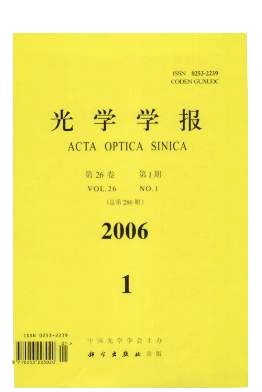光学学报, 2006, 26 (1): 1, 网络出版: 2006-04-20
粒子群优化算法在自适应偏振模色散补偿中的性能研究
Investigation of Particle Swarm Optimization Algorithm in Adaptive Polarization Mode Dispersion Compensation
光通信 偏振模色散 自适应补偿 粒子群优化算法 optical communication polarization mode dispersion adaptive compensation particle swarm optimization
摘要
反馈控制算法是偏振模色散的自适应补偿器的关键组成部分,将粒子群优化算法(PSO)引入到偏振模色散自适应补偿系统中。该算法的优点是具有快速收敛到全局最佳值的能力、避免搜索陷入局部极值的能力、抗噪声能力和多自由度控制能力。理论上分析了粒子群优化算法的两个分类——全局邻居结构粒子群优化(GPSO)和局部邻居结构粒子群优化(LPSO)在搜索全局最佳值方面的能力优劣,给出了局部邻居结构粒子群优化算法成功率达100%的三种邻居拓扑结构。实验表明:在补偿一阶偏振模色散时,全局邻居结构和局部邻居结构搜索全局最佳的成功率都能满足要求,全局邻居结构算法收敛速度快。而在补偿二阶偏振模色散时,全局邻居结构成功率降低,而局部邻居结构仍可以满足要求。
Abstract
The feedback control algorithm is the key integral part of an adaptive polarization mode dispersion (PMD) compensator. The particle swarm optimization (PSO) algorithm was introduced into the adaptive PMD compensation system, which showed the merits of rapid convergence to the global optimum, not being trapped in local sub-optima, robust to noise and capability of multi-degree of freedom control. The performance of two kinds of PSO algorithm, global version of PSO (GPSO) and local version of PSO (LPSO), was analyzed. The three kinds of topologic structures with which the PSO algorithms had 100% success probability were given. The experimental performances of GPSO and LPSO in compensating the first-order and second-order PMD showed that GPSO and LPSO were both qualitied when they are used in compensating the first-order PMD, but LPSO behaved better than GPSO when they are used in compensating the second-order PMD.
张建忠, 沈昱, 周光涛, 于丽, 张晓光, 杨伯君. 粒子群优化算法在自适应偏振模色散补偿中的性能研究[J]. 光学学报, 2006, 26(1): 1. 张建忠, 沈昱, 周光涛, 于丽, 张晓光, 杨伯君. Investigation of Particle Swarm Optimization Algorithm in Adaptive Polarization Mode Dispersion Compensation[J]. Acta Optica Sinica, 2006, 26(1): 1.





